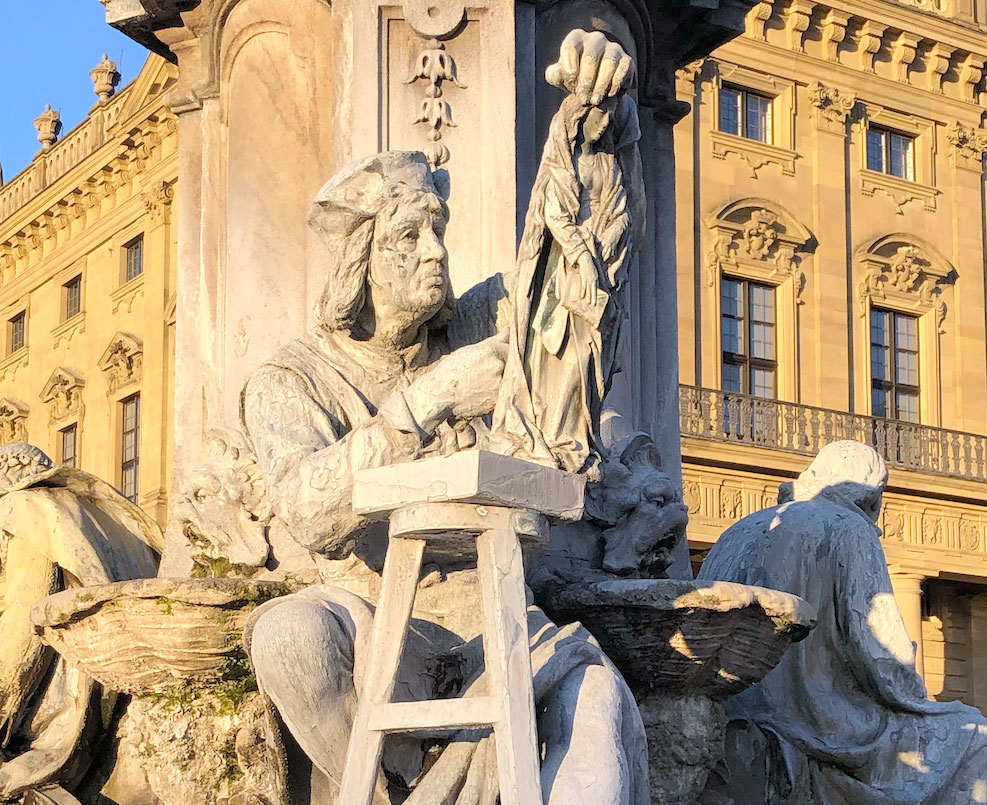About Tilman

Tilman Riemenschneider was a master sculptor and woodcarver from the late 15th century, in an area now part of Germany.
His work is gorgeous, tremendously expressive, and in my opinion, overlooked. He was one of the most prolific and versatile sculptors of the transition period between late Gothic and Renaissance, a master in stone and limewood.
You can see a selection of biographies here.
Riemenschneider was born around 1460 in Germany, in a city called Heiligenstadt. His family moved to Osterode, where his father became Master of the Mint.
Riemenschneider took up sculpting and woodcarving, working as an apprentice in different workshops throughout the region. During this apprenticeship period, he moved to Würzburg in 1483. Two years later he married Anna Schmidt, which in part made him eligible to end his apprenticeships and declare himself a craftsman for hire. He became a citizen of Würzburg, and opened his workshop.
The earliest work still extant is the Grabstein (gravestone) of Eberhard vom Grumbach, in the parish church at Rimpar, completed around 1485 thru 1490. This is publicly available - you can visit the church, and this work is in a side room from the main nave.
Riemenschneider’s success was quick: he began receiving commissions and work requests from the town council and churches, and he produced high profile work in wood and stone during his early years.
By the turn of the century, Riemenschneider was established as a prominent citizen, and owned land and houses in Würzburg and the surrounding region. He became a city council member in 1504, and he held other offices in the civic government up until the Peasant’s War.
During that brief war, Riemenschneider was one of the dissenting council members who supported the peasant rebellion - or at least refused to actively move against the peasants. At the end of that struggle - spoiler, the Peasants lost - the council was punished by with arrest, imprisonment, and torture in the Marienberg Fortress. Riemenschneider was held for months during 1525, and his civic standing and commission business never recovered.
Part of the Marienberg Fortress is now an art museum, and holds the largest collection of Riemenschneider’s work in a large dedicated gallery.
The courtyard of the Prince-Bishop’s Residence now features a life-sized portrait of Riemenschneider, at work on a small carving.
He married four times, and died on July 7, 1531.
